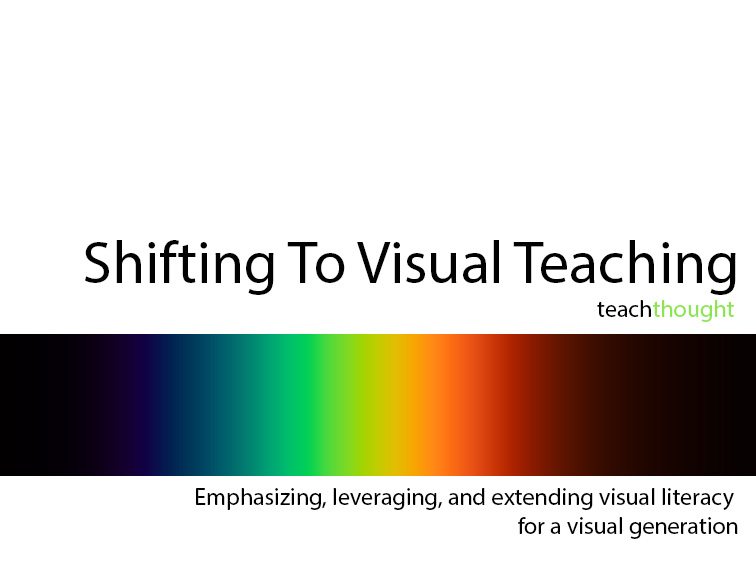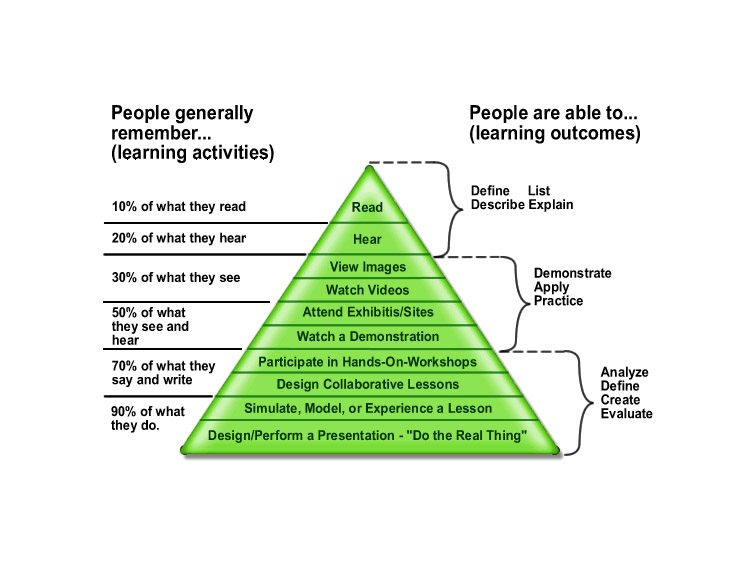
Shifting To Visual Teaching
by Timothy Gangwer
Ed note: This post is a preface to Timothy’s session at the International Conference of Creativity, Thinking & Education, April 18-20, 2015 at the University of St. Thomas in Minnesota
During a rehearsal of Debussy’s La Mer, Maestro Arturo Toscanini found himself unable to describe to the orchestra the effect he hoped to achieve from a particular passage.
After a moment’s thought, he took a silk handkerchief from his pocket and tossed it high into the air. The musicians, mesmerized, watched the slow, graceful descent of the silken square. Toscanini smiled with satisfaction as it finally settled on the floor. “There,” he said. “Play it like that” (Fadiman, 1985).
This vignette is a perfect example of why I’m excited about being a keynote speaker at the upcoming International Conference of Creativity, Thinking & Education, April 18-19, 2015, in Minneapolis, MN. As a global community, we are in the midst of a paradigm shift. We are moving from a period in which the language of production and manufacturing dominated our way of seeing the world; now, ideas about information and communication shape our discourse. Could it be that we are actually in the midst of an even deeper change—one in which the pendulum of worldview is swinging from a more masculine and word-based culture to one that is more feminine and image-based?
It is hard to ignore that the generation of children now moving through our educational system is by far the most visually stimulated generation that system has ever had to teach. Having grown up with cable television, video games, computer software that educates and entertains, and the Internet, our children are truly visual learners coming of age in an increasingly visually oriented world.
Visual Stimulation
Notwithstanding individual differences in intelligence and learning style, this generation of children needs to be taught the way they learn best—with visual stimulation accompanied by active learning strategies. As educators, we need to prepare our students for the world in which they will live and work. We must allow this understanding of the visual nature of our students to influence our teaching techniques and the educational technologies we employ.
We need to become visual teachers.
Whether you are an early childhood teacher or high school chemistry teacher, visual teaching is a template for all your instructional strategies. Since vision develops rapidly in the infant and so governs human sensory occurrence, it soon evolves into the dominant means through which children learn about their world. Our student population is made up of 65 percent visual learners, 30 percent auditory learners, and 5 percent kinesthetic learners (Mind Tools, 1998). Based on the concept that visual images are a language, visual literacy can be defined as the ability to understand and create visual messages.
Development in the area of visual literacy has focused on the growth and expansion of educational programs that stimulate students’ abilities to assess and produce a visual language, as well as enhancement of students’ reading and writing skills through the use of visual literacy strategies. Visual Literacy refers to a group of vision-competencies a human being can develop by seeing and at the same time having and integrating other sensory experiences.
The development of these competencies is fundamental to normal human learning. When developed, they enable a visually literate person to discriminate and interpret the visible actions, objects, symbols, natural or man-made, that he encounters in his environment. Through the creative use of these competencies, he is able to communicate with others. Through the appreciative use of these competencies, he is able to comprehend and enjoy the masterworks of visual communication. —(John Debes, cofounder of the International Visual Literacy Association, 1969, 27) Visual literacy in the classroom has become increasingly important as more and more information and entertainment is accessed through technology. Students must maintain the ability to think critically and visually about the images presented to them in today’s society.
Learning Evolves From Concrete to Abstract
The Dale Cone of Experience model is based on the concept that learning evolves from the concrete to the abstract; visual symbols are nonverbal representations that precede verbal symbols (Sinatra, 1986). Because pictures or illustrations are analogs of experience and are only one step removed from actual events, these visual representations may be able to capture and communicate the concrete experience in various ways. To address the effective use of visual skills in the pursuit of learning, visual learning theory has evolved into four key elements: full-spectrum visual learning, active and performance-based learning, dynamic translation, and a multidisciplinary approach.
Although we should attempt to preserve textual notions of literacy, it would be a breach of our duties as teachers for us to ignore the rhetorical power of visual displays. Visual forms of media, by themselves, and in combination with text and sound, come at our students from all directions, including television and the World Wide Web. The critical media literacy we need to teach must include evaluation of these media, lest our students fail to see, understand, and learn to harness the persuasive power of visual media. —(Michael Day, Chair of the National Council of Teachers of English’s Assembly for Computers in English (Day 1997)
Visual Literacy

Visual skills can be learned. They are not usually isolated from other sensory skills. Teachers should provide appropriate learning environments and materials to allow students to create their own visual messages. Digital literacies such as computers, audiovisual materials, and multimedia, require different skills. Competency in one literacy does not necessarily transfer to another.
Because visual arts can impact student emotions and assist in comprehension, teachers should guide students through the process of learning to recognize and respond to visual and print messages of humor, irony, and metaphor. They may also require guidance to distinguish between factual and fictional visual representations. Students’ learning rates increase when teachers support a variety of learning styles. Studies have shown that processing in reading and math involves both phonological and visual information, thereby increasing reading, writing, and mathematical skills through the use of visual literacy (Stix, 1996).
In a study conducted with groups of students enrolled in a mathematics methods course (a required course using pictorial journals for those teaching at the elementary level), the groups reported a better sense of task and a more focused introduction to their visual learning journal. Both groups agreed that their math anxiety decreased and their self-confidence increased as a result of the pictorial journal assignments (Stix).
If visual literacy is perceived as a language, then there is a need to know how to communicate using this language, which includes being attentive to visual messages and critically reading or viewing images as the language of the messages. Visual literacy, like language literacy, is culturally specific, although there are certainly universal symbols or visual images that are globally understood. “When words and visual elements are closely entwined, we create something new and we augment our communal intelligence … visual language has the potential for increasing ‘human bandwidth’—the capacity to take in, comprehend, and more efficiently synthesize large amounts of new information” (Horn, 2001).
About That Conference
I’m doing a workshop at the Conference, “Visual Teaching & Creativity.” My participants and I will explore the assessment of creativity (Can creativity actually be assessed?). We’ll sift through the six methods of visual learning, lateral thinking, testing visual perception while enhancing visual discrimination skills, brain-compatible strategies, critical/creative thinking, and the technological influences of the creative energy that attracts everything from engineering and biology, to the fine arts (Never let students know what subject you’re teaching!).
I’ll share the components of full-spectrum visual literacy, active and performance-based learning, dynamic translation, and the all-important multi-disciplinary approach to learning–how we learn best. Because my goal is to pair educators and parents with 21st century learners, we’ll also review the seven characteristics of a digitally competent teacher. At the conclusion of the workshop, everyone will leave knowing the twenty steps to cultivate lifelong learning. I hope to see you there!
